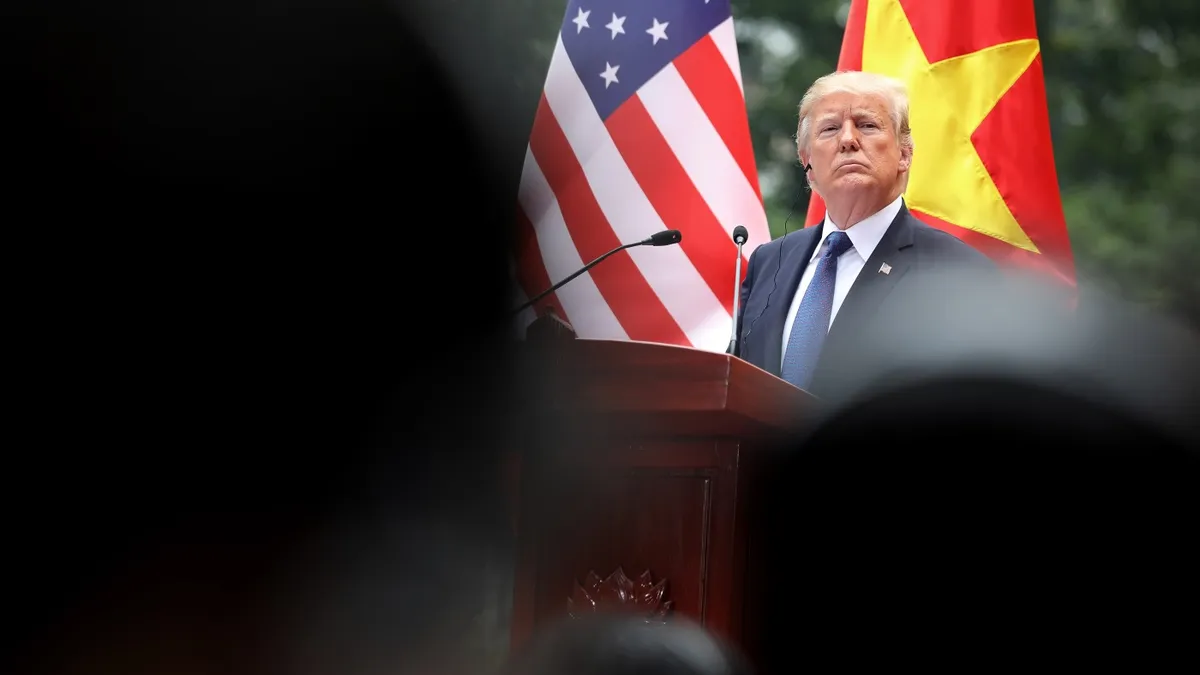
In a significant development, President Trump has announced that the United States has reached a new trade deal with Vietnam, aligning with his ongoing efforts to renegotiate tariffs with numerous countries globally. This announcement comes as the president faces a self-imposed deadline for these tariff negotiations, which is just a week away.
In a recent social media post, Trump stated that tariffs on goods imported from Vietnam will now be set at 20%. Additionally, he indicated that goods shipped through Vietnam will incur a much higher tariff of 40%. Although Trump claimed that Vietnam would be responsible for paying these tariffs, this assertion is misleading, as it is actually U.S. businesses that will bear the cost of these taxes when importing goods from Vietnam.
The president emphasized that in exchange for these tariffs, Vietnam has agreed to provide the United States with TOTAL ACCESS to their markets for trade. This agreement means that American products will be able to enter the Vietnamese market at ZERO Tariff. Trump specifically mentioned that SUVs would see an increase in export volumes to Vietnam, indicating a focus on boosting American automotive sales in the region.
This announcement follows Trump's earlier proposal in April to impose a steep 46% tariff on Vietnamese imports, one of the highest rates applied to any country. The president justified this move as a measure to address the growing U.S. trade deficit with Vietnam. Since then, he has temporarily reduced the tariff to 10%, describing this adjustment as a pause while tariff negotiations continue between officials in Hanoi and Washington.
The trade relations between the United States and Vietnam have witnessed remarkable growth since the U.S. lifted its economic embargo on Vietnam in 1994. The two countries officially normalized diplomatic ties in 1995, paving the way for increased economic collaboration and trade opportunities.
As the deadline for tariff negotiations approaches, further details regarding this trade agreement and its implications for both nations remain to be seen. The outcome of these negotiations could significantly reshape the landscape of U.S.-Vietnamese trade relations.